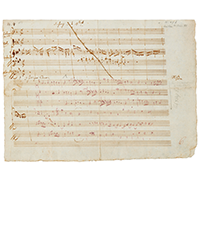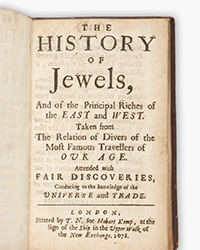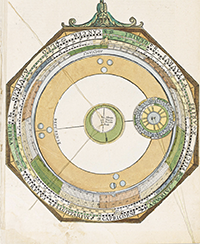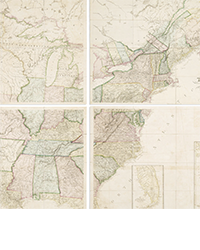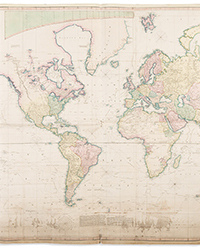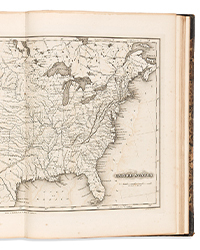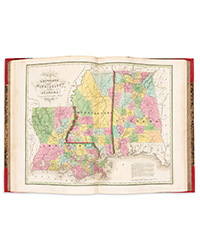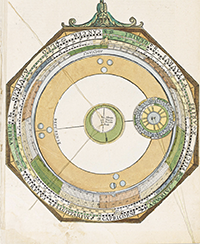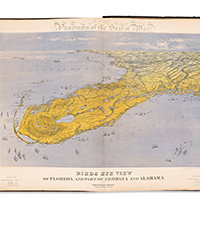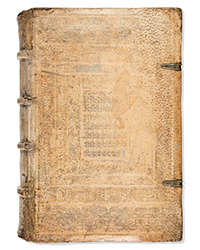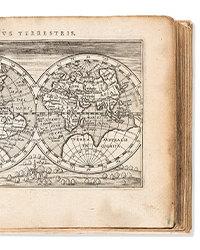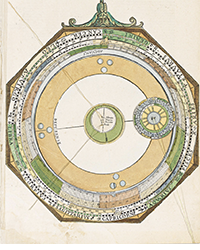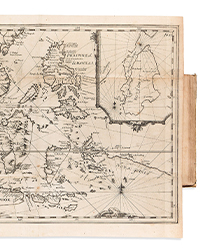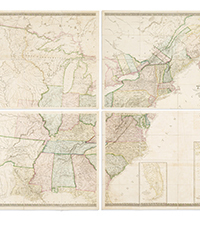In 1787, the Royal Navy sent Anthony Hopkins—sorry, Lieutenant William Bligh, to Tahiti, where he was to pick up some breadfruit plants. He was then to take them to Jamaica to feed the slaves. The crew, led by Mel Gi...—sorry, Fletcher Christian, mutinied and cast Bligh and a few sailors at sea on a rowboat. Against all odds, he made it to England and wrote a relation of his travel. Two hundred years later, R. Donaldson made an incredible movie about it. And the other day, I got a hold of a copy of the French translation of Bligh’s relation. All hands on deck! Hear the true and legendary story on The Bounty!
As a teenager, I got fascinated with the movie The Bounty (1984), so that reading Bligh’s true account took me back to the late 18th century and to the late 1980s at the same time. The English first edition came out in 1790 (London). The French one was published the same year in Paris (Didot), and Amsterdam (Dufour). The Rare Book Hub Transaction History Search section shows that a copy of the first one was sold for $3,780 in New York in 2023 by Doyle, while the latter one went for AU$584.20 the same year in Australia. Christies’ sold an exceptional ‘presentation copy’ (1790) in 2022 for $27,720. The description reads: “Bligh presented copies to the Lords of Admiralty (...) in the hope that his account of the mutiny would absolve him from any blame." (Hill). Many things were at stake in this book that relates “one of the most remarkable incidents in the whole of maritimate history.” (Hill). In another movie from 1962 featuring Marlon Brandon, Bligh is blamed for the mutiny—the 1984 movie is more of a thorough philosophical reflection on cultural interactions. The Tahitians’ sexual mores were very different from the Englishmen’s—the rigid religious morals were no obstacle there. Bligh had already been to the South Seas with Captain Cook, so he knew: “I ordered our surgeon to visit all the men, and I was glad to learn that none showed venereal symptoms.” In the movie, half naked Native women greet the sailors and jump on the ship without hesitation—an accurate vision of paradise, indeed. Bligh underlines that the next day, “there was hardly one member of the crew without a Tyo (girlfriend).”
It’s a blessing to compare the book with the movie. The king of Tahiti, Tyna, did own a painting of Cook, for instance. “Webber painted it in 1777,” Bligh writes. “The frame was broken, but the painting was in very good condition.” Bligh also asked his men not to mention Cook’s death, as most Natives believed he was immortal—a very convenient belief for the English. “He was our guarantor,” to quote Hopkins (Bligh) in the movie. Bligh’s account is particularly interesting as far as power relations are concerned. He was in a position of strength in Tahiti, and he knew it. But he also knew he was walking on thin ice. Consequently, he didn’t demand breadfruit plants to Tyna. He used a stratagem instead—as in the movie. While reflecting on the presents he could send to King Georges in England, Tyna ‘mentioned many things, including breadfruit. This is exactly where I meant to take him. Grabbing the opportunity, I told him that King Georges would be very pleased with getting some breadfruit plants, indeed.”
Of course, you hear about the drunken surgeon (“I’ll drink to that!”), who died in Tahiti—his death is much more striking in the movie; then, there’s this guy: “30 years, 5 feet 10 inches high. Fair complexion, short light-brown hair. Bald headed, strong made. The forefinger on his left hand crooked, and the hands shows the mark of severe scald. Tattooed in several parts of the body.” His name was Charles Churchill—Liam Neeson in the movie. At one point, he tried to jump ship with two other sailors—but they were soon captured. As Captain Cook said about deserter John Marra (see www.rarebookhub.com/articles/3393): “There was nothing extraordinary in his wishing to stay in Tahiti (...), where could he lead a happier life than on one of these islands?” Christian Fletcher somehow came to the same conclusion, and on April 28, 1789, shortly after they’d left Tahiti, he erupted into Bligh’s cabin with a sword in his hand—the mutiny on the Bounty had just started!
“They seized me as I was sleeping, tied my hands behind my back, threatening to kill me should I utter a word. I shouted with all my strength anyway, to warn the officers but they had already seized those who were not involved in their plot.” Bligh confesses that he didn’t see it coming—there was, he says, no warning sign at all. In the movie, tension rises slowly. And when bringing Bligh on the deck, Mel Gibson (Christian) shouts: “I am in hell!” I don’t like this part, and used to blame it on the actor’s typical over the top type of acting. But Bligh’s account puts the record straight: “Christian appeared to be in a very dark mood, as if he was meditating his own destruction. I asked him if that was the way he was paying me back for my friendship. My question apparently upset him, and he answered with great emotion: “Yes it is, Captain Bligh—that’s exactly it, I am in hell, I am in hell.” Left on the rowboat in the middle of the ocean with some twenty faithful sailors, Bligh was almost sent to a sure death. Not that they couldn’t reach some nearby islands to find food and water—but because they were left unarmed, and that power relations with the Natives were now in their disfavour. It almost cost them their lives on Tofo Island. This is one of the best passages of the book, and of the movie. As he made it, in extremis, to the rowboat with 200 angry Natives throwing stones at him, Bligh “caught a glimpse at the unfortunate sailor they had just murdered; two Natives were hitting his head with heavy stones on the beach.” There are cultural differences between peoples around the globe, no doubt. But all of them will prove Lafontaine right, who once wrote: might is right.
Not only did Bligh reached Timor and eventually England, where he was freed of all charges regarding the mutiny—but he was sent to Tahiti again, in 1792. This time, he made it to Jamaica, and he actually introduced to the island, where it is still widely used among the population today. The mutineer’s fate remained unknown for decades until it was found out that they’d sought refuge on the isolated Pitcairn Island. That’s where most of them spent the rest of their days, including Fletcher Christian—the mastermind behind the infamous mutiny on the Bounty!
T. Ehrengardt


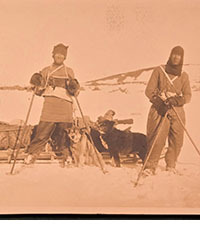
![<b>Scandinavian Art & Rare Books Auctions, Dec. 4:</b> ROALD AMUNDSEN: «Sydpolen» [ The South Pole] 1912. First edition in jackets and publisher's slip case. <b>Scandinavian Art & Rare Books Auctions, Dec. 4:</b> ROALD AMUNDSEN: «Sydpolen» [ The South Pole] 1912. First edition in jackets and publisher's slip case.](https://ae-files.s3.amazonaws.com/AdvertisementPhotos/0a99416d-9c0f-4fa3-afdd-7532ca8a2b2c.jpg)
![<b>Scandinavian Art & Rare Books Auctions, Dec. 4:</b> AMUNDSEN & NANSEN: «Fram over Polhavet» [Farthest North] 1897. AMUNDSEN's COPY! <b>Scandinavian Art & Rare Books Auctions, Dec. 4:</b> AMUNDSEN & NANSEN: «Fram over Polhavet» [Farthest North] 1897. AMUNDSEN's COPY!](https://ae-files.s3.amazonaws.com/AdvertisementPhotos/a077b4a5-0477-4c47-9847-0158cf045843.jpg)
![<b>Scandinavian Art & Rare Books Auctions, Dec. 4:</b> ERNEST SHACKLETON [ed.]: «Aurora Australis» 1908. First edition. The NORWAY COPY. <b>Scandinavian Art & Rare Books Auctions, Dec. 4:</b> ERNEST SHACKLETON [ed.]: «Aurora Australis» 1908. First edition. The NORWAY COPY.](https://ae-files.s3.amazonaws.com/AdvertisementPhotos/6363a735-e622-4d0a-852e-07cef58eccbe.jpg)
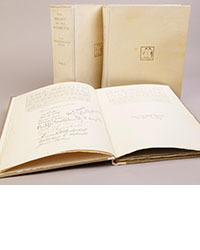
![<b>Scandinavian Art & Rare Books Auctions, Dec. 4:</b> SHACKLETON, BERNACCHI, CHERRY-GARRARD [ed.]: «The South Polar Times» I-III, 1902-1911. <b>Scandinavian Art & Rare Books Auctions, Dec. 4:</b> SHACKLETON, BERNACCHI, CHERRY-GARRARD [ed.]: «The South Polar Times» I-III, 1902-1911.](https://ae-files.s3.amazonaws.com/AdvertisementPhotos/3ee16d5b-a2ec-4c03-aeb6-aa3fcfec3a5e.jpg)
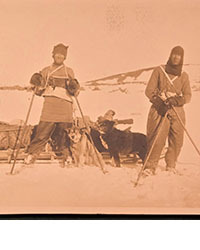
![<b>Scandinavian Art & Rare Books Auctions, Dec. 4:</b> [WILLEM BARENTSZ & HENRY HUDSON] - SAEGHMAN: «Verhael van de vier eerste schip-vaerden […]», 1663. <b>Scandinavian Art & Rare Books Auctions, Dec. 4:</b> [WILLEM BARENTSZ & HENRY HUDSON] - SAEGHMAN: «Verhael van de vier eerste schip-vaerden […]», 1663.](https://ae-files.s3.amazonaws.com/AdvertisementPhotos/d5f50485-7faa-423f-af0c-803b964dd2ba.jpg)
![<b>Scandinavian Art & Rare Books Auctions, Dec. 4:</b> TERRA NOVA EXPEDITION | LIEUTENANT HENRY ROBERTSON BOWERS: «At the South Pole.», Gelatin Silver Print. [10¾ x 15in. (27.2 x 38.1cm.) ]. <b>Scandinavian Art & Rare Books Auctions, Dec. 4:</b> TERRA NOVA EXPEDITION | LIEUTENANT HENRY ROBERTSON BOWERS: «At the South Pole.», Gelatin Silver Print. [10¾ x 15in. (27.2 x 38.1cm.) ].](https://ae-files.s3.amazonaws.com/AdvertisementPhotos/fb024365-7d7a-4510-9859-9d26b5c266cf.jpg)
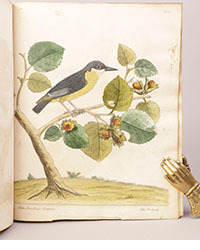
![<b>Scandinavian Art & Rare Books Auctions, Dec. 4:</b> PAUL GAIMARD: «Voyage de la Commision scientific du Nord, en Scandinavie, […]», c. 1842-46. ONLY HAND COLOURED COPY KNOWN WITH TWO ORIGINAL PAINTINGS BY BIARD. <b>Scandinavian Art & Rare Books Auctions, Dec. 4:</b> PAUL GAIMARD: «Voyage de la Commision scientific du Nord, en Scandinavie, […]», c. 1842-46. ONLY HAND COLOURED COPY KNOWN WITH TWO ORIGINAL PAINTINGS BY BIARD.](https://ae-files.s3.amazonaws.com/AdvertisementPhotos/a7c0eda0-9d8b-43ac-a504-58923308d5a4.jpg)
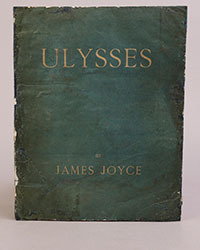
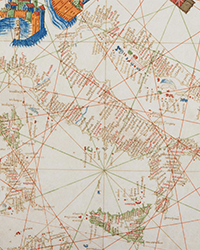
![<b>Sotheby’s, Dec. 11:</b> Darwin and Wallace. On the Tendency of Species to form Varieties..., [in:] <i>Journal of the Proceedings of the Linnean Society,</i> Vol. III, No. 9., 1858, Darwin announces the theory of natural selection. £100,000 to £150,000. <b>Sotheby’s, Dec. 11:</b> Darwin and Wallace. On the Tendency of Species to form Varieties..., [in:] <i>Journal of the Proceedings of the Linnean Society,</i> Vol. III, No. 9., 1858, Darwin announces the theory of natural selection. £100,000 to £150,000.](https://ae-files.s3.amazonaws.com/AdvertisementPhotos/00d5fd41-2542-4a80-b119-4886d4b9925f.png)

